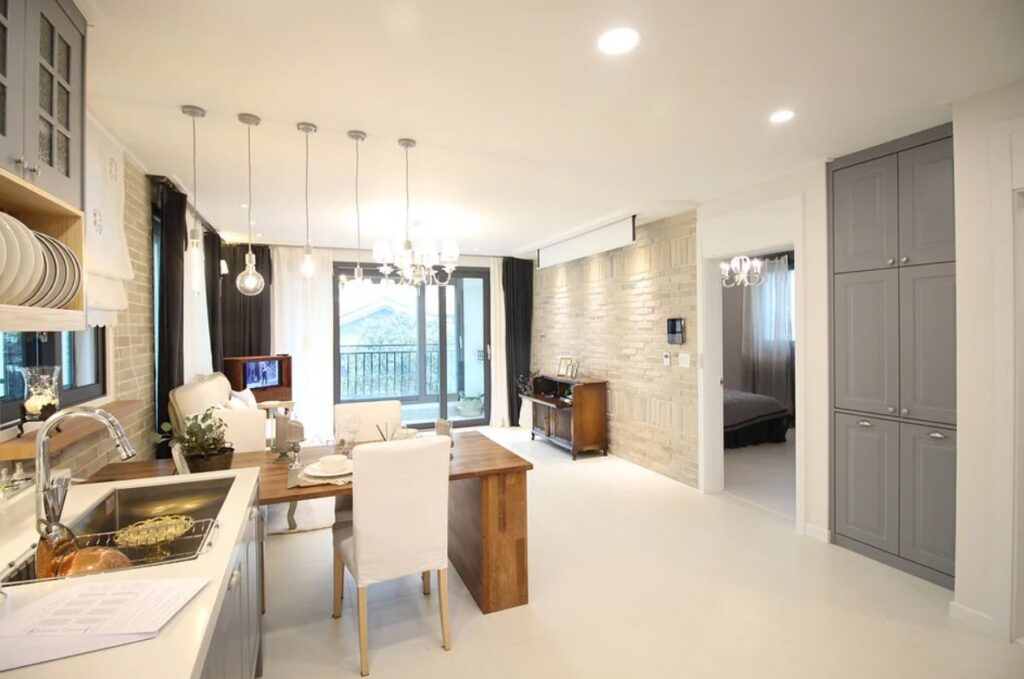Your listing is the first and probably the only chance to attract and engage potential buyers. Typically, it includes fundamental details such as an address, features, what you will be offered along with the sale, and the selling price. But apart from that, what sells is how user-friendly and unique is your description compared to other listings.
According to the National Association of Realtors, almost 44% of people first search for homes online before hiring an agent. If this gets you overwhelmed about being a professional writer, the good news is, you don’t have to be a copywriter to write a listing that gains more eyeballs. By adding a few simple features, you can ensure your home description to be more interesting and informative.
We’ve curated the 5 best and creative tips to write your real estate description in an effective way that maximizes the sale and gets more people to pay attention to your listing. Sellers, start taking notes!
1. Accurate property description:

Buyers hate playing the guessing game. Keep all the information on a proper platter and serve it to them. Your property must have an accurate description of everything – starting from the smallest details such as the condition of the roof to important things like the neighborhood or major repairs.
Own up to the flaws and shortcomings of the house and write it in a positive manner to avoid any surprises. When your potential buyers see through the honesty, chances are higher for them to consider your listing.
2. Say NO to overloading adjectives
Populating your home description with adjectives that may exaggerate the reality could have an adverse effect. Be descriptive but don’t go over the top with praises for your property. You may end up sounding biased rather than informative. Your real estate listing description is your chance to unleash the creative beast and give the buyers a visual through your words.
For example, we all know “cozy” is another way to describe “small”. Subtlety is the key to not distract buyers from reality.
3. Highlight unique features

Make your real estate listing description sound like it has a life of its own. Adding character to it changes the game. Is there a fireplace in the master bedroom? Or a modular kitchen that has all the amenities? Mentioning this in your home description will help buyers differentiate your listing from the rest.
Mention all the features you think will make your house stand out and you will notice the right kind of buyers engaging with your listing.
4. Add professionally clicked photographs
When browsing homes online, buyers have limited access to understand how your home looks. By adding well-clicked pictures with proper lights and showing important details, it helps the buyer soak in and feel how they can fit in the space. Stay true to what your home looks like and avoid playing around with filters.
If you upload poorly clicked or grainy images, the buyers will swiftly move on to the next listing. You don’t have to spend much on this – a smartphone would do wonders. Just open the curtains, clean up the space, and start snapping!
5. Include words that add value

Words that add value to your home description make a great impact. According to Houzeo, a leading Flat Fee MLS website in America, prefixes such as “luxurious”, “impeccable”, “uncompromising”, “uninterrupted”, etc help to boost sales. A comprehensive and well-written real estate listing description lets the buyers paint a picture of the property as their own house.
6. Avoid red flags:
Just like words that add value to your home description, there are a set of words that fall under the “red flag” category. In a study, Zillow found out there are certain words that can hurt the buyer’s sentiments, so much so, they would never want to consider your listing and even go ahead to put up a negative review without having known much about the property.
These words include “fixer”, “cautious”, “TLC”, “cosmetic”, etc. The reason being buyers aren’t looking for flip homes. They want to see themselves living there for another 8-10 years of their life. If you’re wondering what’s so negative about these words – these words aren’t outright offensive but they open room to negotiation.
7. Mention call to action

Now that your real estate listing description has caught buyers’ attention, guide them to the next step. A call to action is a reminder to awaken their sense of urgency by sharing your contact information.
Let’s put your home listing description to work. Here, we will be summing up everything we have learned and putting it into a practical example to write a sample real estate listing description.
Original:
Financial district, Bamboo hardwood floors, European-style cabinets, granite countertops, and stainless steel appliances. Deluxe baths offer soaking tubs with separate showers and granite tile.
• Amenities
• Gym
• On-Site Management
• Pet friendly
• Club Room
• Rooftop Terrace
Do NOT contact me with unsolicited services or offer
Recommended: This well-lit abode is situated in the heart of America – New York City where the sun shines on your patio and bamboo hardwood floors add a character of their own. The European-style cabinets will ensure you have everything in place and granite countertops can vouch for a perfect blend of stability and style. When you come home after a long day, soak yourself into relaxing baths in the deluxe bathtubs with separate showers and a bathroom styled with granite tiles. This home is not confined to four walls. Enjoy the luxury of amenities such as:
• Amenities
• Gym
• On-Site Management
• Pet friendly
• Club Room
• Rooftop Terrace
Now that you have spent some time understanding the nuances of writing an effective home description, implement it for maximum results. With more control in your hands over the sale, place yourself in the shoes of a buyer and write down everything fundamental in a creative manner.
 Imagup General Magazine 2024
Imagup General Magazine 2024



